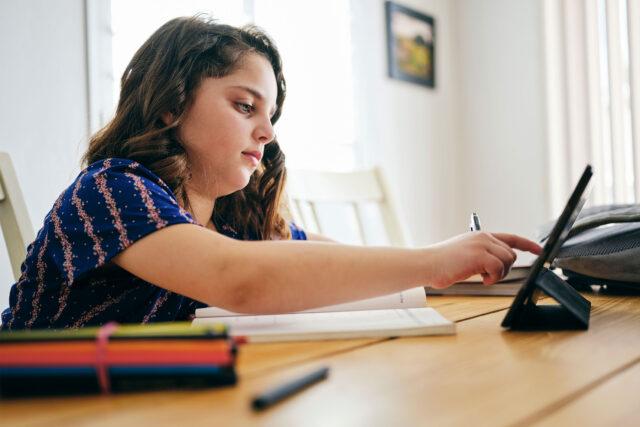Distance learning due to COVID-19 is not going to be a temporary phenomenon. Now, with K–12 campuses closed since mid-March and likely to stay shuttered for the remainder of the school year, students will miss out on about a third of their 180 in-person instructional days. The timing of these closures means no statewide end-of-year standardized tests, posing significant difficulties for teachers and districts when schools reopen.
Even before most districts announced the end of in-person classrooms, most California public school parents expressed concerns over providing productive learning at home—70% say they are somewhat or very concerned, in PPIC’s April Statewide Survey.
And success at distance learning for some students is uncertain because access to the internet and devices, curriculum, the demands of home life, and learning needs—especially for English Learners and students with disabilities—can vary so widely. Differences are already being revealed—according to a survey of public school teachers in late April, 25% of students are not logging in or making contact with their teachers during distance learning. In districts where poverty rates exceed three-quarters of the student population, 36% of students are not in contact with their teachers.
When schools do reopen, teachers must determine how to accelerate the learning of students who fell behind—whether opening happens in July, as Governor Newsom has advocated, or through expanded summer school, or on planned fall start dates. And without results from spring 2020 standardized tests, helping students catch up may require a sustained effort. Some local education agencies are making plans to use formative assessments to assist in reopening, given that California, like all other states, has received a waiver for the federally required statewide assessments.
Typically, students in grades 3–8 and in grade 11 take statewide standardized tests in the spring. These tests of English language arts, math, and science help measure student learning during the year and may be used to place students in fall math courses. Such end-of-year assessments to gauge student learning are essential to California’s accountability system.
The results can also give teachers more insight into the mix of students who show up in their classroom in the fall, as well as identify schools and districts in need of extra support. For 11th graders, the assessments can signal how prepared they are for the rigors of college coursework: the results are later used to place students in English and math in the CSU system.
Furthermore, few districts completed the standardized tests that measure the English proficiency of English Learners before spring closures, tests that determine if students can exit English Learner status. In some districts, English proficiency test results determine the courses students take in the fall.
Given how rapidly the COVID-19 crisis unfolded, these test cancellations were unavoidable. But the absence of test results compounds the challenges of reopening schools: teachers will lack vital knowledge about how distance learning has impacted their students.
Teachers and school staff will likely conduct plenty of assessing on their own, planning lessons for the diverse needs of their students. The hope is their efforts can smooth the way for students’ return to their classrooms; but we are at least a year away from understanding how the crisis has impacted our students systemwide.




